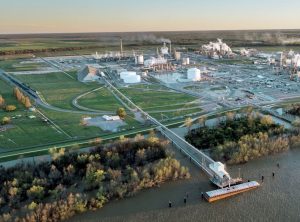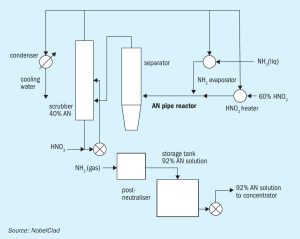Every urea plant is also a water plant as the overall reaction starts with two molecules of ammonia and one molecule of carbon dioxide resulting in one molecule of urea and one molecule of water. Further water is added to the process via the steam ejectors in the evaporation section. All this water, which is contaminated with ammonia, carbon dioxide and urea plus possibly other contaminants like formaldehyde, methanol, oil, etc is collected in an ammonia water tank and then sent to a wastewater treatment section. The purpose of the wastewater treatment section is to reduce the ammonia, carbon dioxide and urea levels to acceptable levels. First the wastewater is treated in a first desorber column, where LP steam is used to strip off the ammonia and carbon dioxide, reducing the ammonia content from approx. 6-8 wt-% ammonia to approx. 1 wt-% ammonia. Nothing happens with urea in the first desorber as temperatures are too low to hydrolyse the urea back to ammonia and carbon dioxide. This takes place in the next step, in the hydrolyser, which can be quite a large counter current column operating with MP steam at approx. 23 bar (Stamicarbon design) or a horizontal deep hydrolyser operating at approx. 33 bar (Saipem design, refer to figure). Downstream of the hydrolyser there is another desorber column to strip off the remaining ammonia and carbon dioxide. Nowadays, boiler feed water quality can be realised by modern wastewater treatment. But at higher plant loads the operating margin in the wastewater treatment can become too small leading to higher ammonia and urea levels during certain operating conditions… n




